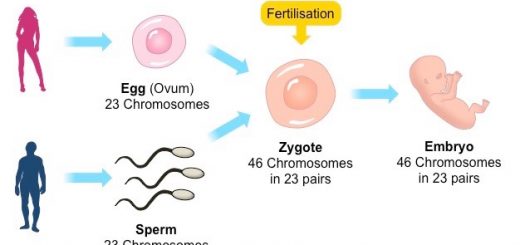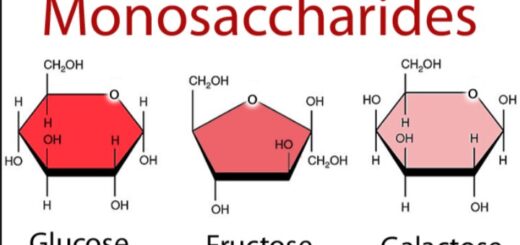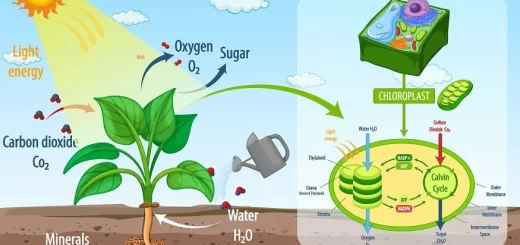Important excretory organs in man’s body and Structure of urinary system
The biological processes that occur in the bodies of living organisms are carried out through the chemical reactions that leave some waste products, The living organism must get rid of these waste products as soon as they are formed, otherwise, they will cause many problems and infections, this occurs through the process that is called the excretion.
Importance of excretion in animals
Excretion is the process by which living organisms get rid of waste products that are produced from biological processes, The excretion refers only to the materials that leave the body through the plasma membranes.
The important waste products :
- Water and CO2 are produced from the degeneration of organic molecules.
- Nitrogenous waste products ( ammonia, urea, and uric acid ) which result from protein degradation.
Some materials are not considered as excretory products as:
- The undigested food that goes out of the animal body in the form of faeces, because it leaves the body without passing through the plasma membranes.
- The nitrogen in the air which enters the lungs in inspiration and leaves them in expiration, because it enters and leaves the body without passing through the plasma membranes.
Functions of the excretory organs in higher animals :
- Disposal of damaged and poisonous materials.
- Regulation of the body content of water and minerals.
Excretion in man
The important excretory organs in man’s body are skin, lungs, kidneys and liver, The important waste products of human body and the organs that are responsible for their excretion .
- The excreted material is carbon dioxide, The excretory organs are the lungs.
- The excreted material is water, The excretory organs are kidneys, skin, and lungs.
- The excreted material is nitrogenous waste products, The excretory organs are kidneys, and skin (small percentage) .
- The excreted materials are salts, The excretory organs are kidneys and skin.
- The excreted materials are spices, The excretory organs are kidneys, and lungs (volatile substances).
- The excreted materials are poisonous materials, The excretory organs are kidneys or liver ( in which the poisonous materials are transformed into non-poisonous forms in the body or into non-soluble forms).
Skin
Skin is the biggest organ in the body, as it covers the whole body and the limbs from the outside, The skin consists of two main layers which are an outer epidermis and an inner dermis, It adheres to the body by a layer of fat present under the dermis, Epidermis consists of several layers of epithelial cells.
The surface area consists of dead cells, full of a horny substance called keratin, It arises from the migration of inner layer cells of the epidermis to the surface, and then dies, It is worn out and continually replaced from beneath because it is always subjected to friction (when wiping your face or body with a towel or rubbing your hands).
The inner layer makes a continuous replacement of the surface layer, Its base contains pigment cells that secrete granules called melanin that are responsible for the colour of skin, The epidermal layer of skin acts as a barrier that prevents the penetration of bacteria.
The dermis lies beneath the epidermis, consisting of connective tissues, This layer contains blood capillaries, sensory nerve endings, Lymphatics, sweat glands, sebaceous (fat) glands, fatty cells, hair follicles, and hair muscles.
Sweat gland
The functional unit of excretion in skin, It is a coiled tube that reaches the skin surface through pores called sweat pores, Its function for extraction of sweat:
- It extracts the sweat (water, salts and small amount of nitrogenous wastes) from the blood.
- This sweat is continually produced on the surface of the skin to decrease the body temperature.
- It is important to remove the remaining wastes from sweat continually by washing because they cause the skin to be sticky and sweat pores to become blocked, resulting in a foul (unpleasant) odour.
Hair
Hair is made of a hair follicle surrounded by many blood capillaries, The hair follicle is supplied with an erector muscle to move it when it contracts, At its free end, there is a sebaceous (fat) gland that produces an oily secretion to facilitate the exit of hair from the skin and to keep the hair soft and pliable, Sensory nerve endings respond to touch, pain, pressure, and temperature.
Kidney
Each vertebrate animal has two kidneys, In lower vertebrates (such as amphibians) such as frog: the kidneys are long and thin organs that extend on the two sides of the vertebral column.
In higher vertebrates (such as mammals): The kidneys are firmer and situated behind the peritoneum (membrane that lines the abdominal cavity), a tube called the ureter runs from each kidney to the base of bladder, through which urine is collected and passed to the outside through the urethra.
Kidney in the human body
The two kidneys are situated in the upper part of the abdominal cavity, one at each side of the vertebral column, The length of each kidney is about 12 cm long and about 7 cm wide, while its thickness is about 3 cm.
The kidney is bean-shaped, its outer part is convex, while the inner one is concave, On the inner side of each kidney, the renal artery comes from the aorta, and the renal vein leads to the posterior vena cava.
The kidney is differential internally into two regions which are the cortex (an outer narrow region of the kidney) and the medulla (an inner broad region of the kidney), The inner concave part (cavity) of the kidney from which the ureter is emerged, is called the pelvis.
Nephron
It is the functional unit of the kidney, Each kidney consists of about one million nephrons, The structure of the nephron:
- Bowman’s capsule is a cup-shaped, thin, and double-walled capsule found in the cortex.
- The nephric tubule starts being coiled in the cortex and is called 1st coiled tubule, It becomes a U-shaped structure in the medulla and is called the loop of Henle, It returns coiled in the cortex and is called 2nd coiled tubule.
The nephric tubules are collected to form the collecting duct that opens in the concave cavity of the kidney which is called the pelvis.
Structure of the urinary system
- Kidneys.
- The ureters are two tubes that emerge from the kidneys that pass the urine into the urinary bladder and open at the back of the bladder in an inclined position.
- The bladder is a small muscular sac and has a sphincter muscle that closes the outlet of the bladder till urine accumulates, then the bladder contracts, expelling the urine through a duct called the urethra.
- The urethra is a duct connected to the bladder in which the urine passes through it outside the body.
Urine extraction
- The renal arteries come from the aorta, each enters a kidney at its concave surface.
- The renal artery divides into a great many arterioles and capillaries at the cup-shaped nephron (Bowman’s capsule).
- In Bowman’s capsule, the blood fluid ( plasma is filtered out blood to be collected in the nephric tubules.
- The filtered fluid contains water, wastes, salts, and glucose, but the blood cells and large protein molecules remain in the blood.
- Inside nephric tubules, the re-absorption of required water, glucose, and mineral substances must take place to return them into the blood.
- The remaining liquid contains nitrogenous wastes (urea), some inorganic salts, excess water, and excess substances such as small amounts of glucose and vitamins, forming the urine.
- Urine passes down the collecting duct to the pelvis, where it is collected and continues down the ureter to the bladder to be stored.
- When the bladder contracts, urine is expelled out through the urethra.
Re-absorption is a biological process in which the body re-absorbs the required water, glucose, and mineral substances to be back into the blood and the wastes leave the body in the form of urine.
The kidney does not exit all the fluid extracted from Bowman’s capsule as the body will lose much of its required water and essential substances and the individual has to drink daily 170 liters of water to compensate its loss.
The human body contains about 5-6 liters of blood, about 1.2 – 1.3 liters of blood pass through each kidney per minute, The total amount of blood that passes daily through each kidney is about 1600 liters ( approximately ¼ of the blood volume pumped by the heart).
This means that a very high percentage of blood always passes through the kidney, From the total blood volume, three liters of plasma pass through the two kidneys to be examined about 560 times per day.
Composition of urine
Urine consists of excess water, nitrogenous wastes (urea), some inorganic salts, and excess substances such as small amounts of glucose and vitamins.
The individual can live with one kidney, in this case, this kidney grows and becomes slightly bigger to perform the function of two kidneys, but if two kidneys stop functioning, this will lead to the accumulation of poisonous wastes in the blood that leads to death.
Artificial kidney
Kidney failure takes place due to some diseases, The kidneys stop functioning and this leads to the accumulation of harmful wastes in the blood, So, the blood must be purified by the artificial kidney that works as follows:
- The blood of the patient is channelled from the artery to the device in which it passes through the semi-permeable tube.
- From the other side of the tube, a purified liquid is passed that contains all the plasma contents, except urea and other metabolic wastes.
- The harmful metabolic wastes are passed from the patient’s blood through the semi-permeable membrane to the bath because the concentration of these wastes is higher in the patient’s blood than in the bath.
- The purified blood is returned to the patient.
- The patient receives the artificial kidney treatment for several hours a day for 2-3 times a week.
Liver
In addition to the function of the liver in digestion and metabolism, the liver has a role in the excretion process, because:
- It breaks down the poisonous substances which are absorbed by the small intestine to purify the blood.
- It separates the amino groups (NH2) from the excess amino acids (deamination) to change them into urea and expel them through the kidneys outside the body.
Urea is an excretory poisonous substance that is formed by the liver through separating the amino groups from the excess amino acids and expelled through the kidneys outside the body, Urea poisoning is the accumulation of excretory substances in the blood of man, due to the stop functioning of kidneys (kidney failure).
Role of the respiratory system in the excretion process in man and Respiration in plant
Nervous system in man, Nerve cells types and Nature of nerve impulse
Urinary passages function, structure of Ureter, Urinary bladder and Uvulae vesicae
Functions of Kidneys, Role of Kidney in glucose homeostasis, Lipid and protein metabolism



